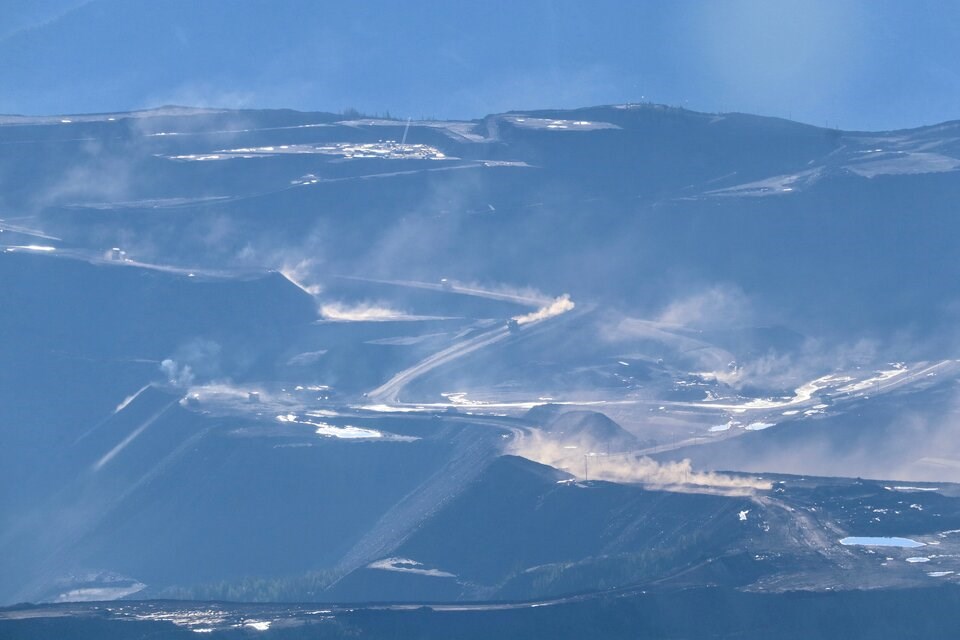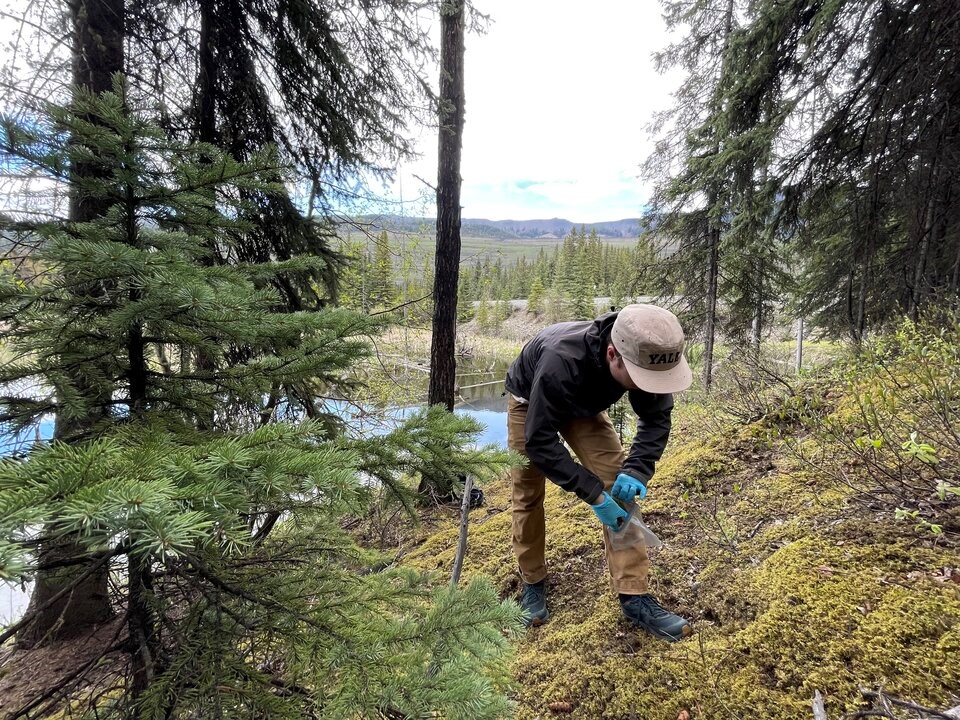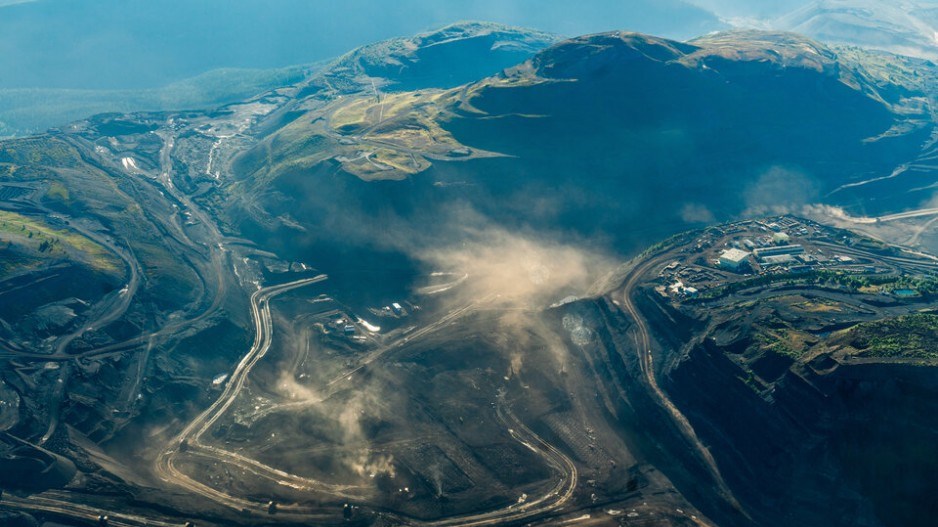A long list of toxic elements have been found within 30 kilometres of B.C.’s biggest coal mines, raising questions over the health of nearby communities, a new study says.
The research, published this month in the scientific journal Heliyon, examined deposits laid down by dust clouds emanating from mountaintop-removal coal mines in B.C.’s Elk Valley, home to the communities of Sparwood and Elkford.
Author Wyatt Petryshen, a mining policy and impacts researcher for Wildsight, said he was surprised to find such a vast dispersion of selenium, uranium and germanium, among other toxic elements, so far from the mines.
“This study has demonstrated that there are heavy metals that are being transported from these mines and deposited nearby,” Petryshen said.
“This does show that there is a risk to human health.”
What that risk is remains unclear. Petryshen said if officials want to uphold a precautionary principle for human health in the region, they should carry out more investigations into how people are being impacted.
B.C.’s Elk Valley is home to four operational coal mines all run by Teck Resources Ltd. — the same company whose board former B.C. Premier John Horgan agreed to join before a proposal to spin off the entity was put on hold. Together, they employ more than 4,000 people and account for 80 per cent of Canada’s metallurgical coal exports.
The mines recently topped the BC Mining Law Reform’s annual “dirty dozen” list as “one of the most serious pollution problems in North America.”
Since the mid-1990s, surface runoff water leaching through mine tailings has repeatedly carried selenium into nearby rivers, contaminating drinking water and aquatic ecosystems, according to government inspections.
Between 2015 and 2022, 55 inspections led to 19 warnings and 13 referrals for administrative penalties, including a nearly $16-million fine issued earlier this year. The province is still actively investigating referrals for another six administrative penalties.
In an email, Teck spokesperson Dale Steeves said the company has a number of dust mitigation measures and dust monitoring systems currently across its Elk Valley operations. It’s also piloting “other innovative measures and monitoring approaches” to improve dust management, he said.
“Extensive air quality monitoring shows that levels of substances do not pose a risk to human health,” wrote Steeves.
‘Very dusty place’
To reach buried coal seams, mining through mountaintop removal first requires razing whatever forest sits on the surface. Next, explosives are used to blast away at the ground and reach the coal deposits.
Petryshen spent the last two years testing how that process affected water quality in the area. But people would also regularly email and text him about poor air quality, with layers of coal dust settling on their homes, cars and in their hot tubs.
“When you drive around, you realize quite quickly it's a very, very dusty place,” Petryshen said. “No one ever really discussed the dust issues, and then what those impacts would then be on individuals' health.”
Petryshen began by researching other regions where the impacts of mountaintop-removal coal mining had been better documented — places like the Appalachians. There, many towns had been built in the lee of coal mines, but none quite as big as the Elk Valley mines in B.C.

He got in touch with Michael Hendryx, a researcher from Indiana University who since 2006 has documented how such coal mines has led to a public health disaster in nearby communities.
Hendryx has linked dust from nearby mining operations to spikes in lung cancer, cardiovascular diseases, birth defects and chronic obstructive pulmonary diseases (COPDs), such as bronchitis and emphysema.
Altogether, the American researcher found there were roughly 1,200 extra deaths every year across the parts of Appalachia where mountaintop-removal mining took place — a figure that does not include people working in mining itself.
By 2017, he had published over 30 papers on the problem.
“The coal industry does not like what we have to say,” Hendryx said in a TED Talk that year.
“Not only are death rates higher, but they increase as levels of mining go up in a dose response manner.”
A natural sponge offers a snapshot of contamination
Having seen the large body of evidence in the U.S., Petryshen decided to look closer to home — and closer to his feet. Between May 29 and June 1, 2022, he tromped around Elk Valley taking samples from three moss species across 19 locations, each offering a three-year snapshot of contamination from Teck’s Line Creek and Elkview mines.
Like clothing next to a smoky campfire, moss pulls everything out of the atmosphere — from nutrients to contaminants — and incorporates them into its tissues.
“When you sample it, just like a sponge, whatever was in air will also be in the moss itself,” Petryshen said.
Next, he tested each moss sample for 47 elements, ultimately finding the closer to the mine, the higher the contamination rates. Petryshen also concluded prevailing wind patterns and mountain ridge lines played a role in shielding or funnelling potentially toxic elements far from the mines.

It’s not clear which part of the mining process — blasting, processing or transportation — is releasing the most contaminants, and Petryshen said more research needs to be done to find out.
“We need to do a better job of making sure that the train load-up process and the coal cleaning isn't giving off dust. We have to make sure that the trains going through communities aren't giving off dust,” he said.
Air quality stations are already set up in the valley to measure contaminants released into the air by wildfires and the burning of fossil fuels. But Petryshen said monitoring stations also need to be updated to measure the elements he found within that dust.
Balancing human health with economic benefits of coal
Other open questions remain around how much of the heavy metals Petryshen found in moss have made it into the surrounding soil.
The Teck spokesperson said selenium concentrations in all samples from the Wildsight study were below federal soil quality guidelines.
“They are correct. But my samples are from moss,” said Petryshen. “It’s literally apples to oranges.”
Creating a baseline for how much heavy metal has made it into the region's soil would help scientists or governments measure how much selenium and other elements bleed into the surrounding environment, Petryshen said.
Local health area data indicates the region surrounding the coal mines has a nearly 30 per cent higher rate of COPD compared to the provincial average. But someone needs to go out and filter for other sources in order to determine whether it’s coming from a coal mine or something else, Petryshen said.
That would likely mean carrying out community-level health studies similar to what has been done in Appalachia. Without comparing the long-term health of residents in places like Sparwood and Elkford with communities further away from the mines, everyone will be left guessing how the mine dust might be harming people living in the area, Petryshen said.
In an email attributed to nobody in particular at the Ministry of Environment and Climate Change Strategy, a spokesperson confirmed the province is aware of the study and reviewing its conclusions. The statement added that environmental permits for Teck’s mines require them to monitor air quality and manage coal dust.
“If monitoring data demonstrates potential issues, management actions are taken to assess and mitigate potential impacts. Management and monitoring plans are reviewed on a regular schedule,” the statement said.
“Going forward, air quality impact assessments will consider the findings of this study.”
As many governments look to phase out coal over the long-term, the metallurgical kind produced in Elk Valley may have more staying power. That's because unlike coal used to generate electricity, there are fewer alternatives to feed the coking process required to produce metals like steel. But even from an economic perspective, there is a limit to coal’s benefits: premature mortality associated with coal mining in four U.S. states is thought to cost at least US$10 billion per year above the economic benefits of coal.
For British Columbia, Petryshen said that means policymakers need to seriously consider if mining coal outweighs the cost to human health.
Editor's Note: This story has been updated to reflect Teck Resources Ltd.'s decision to pause plans to spin off its Elk Valley coal operations.




